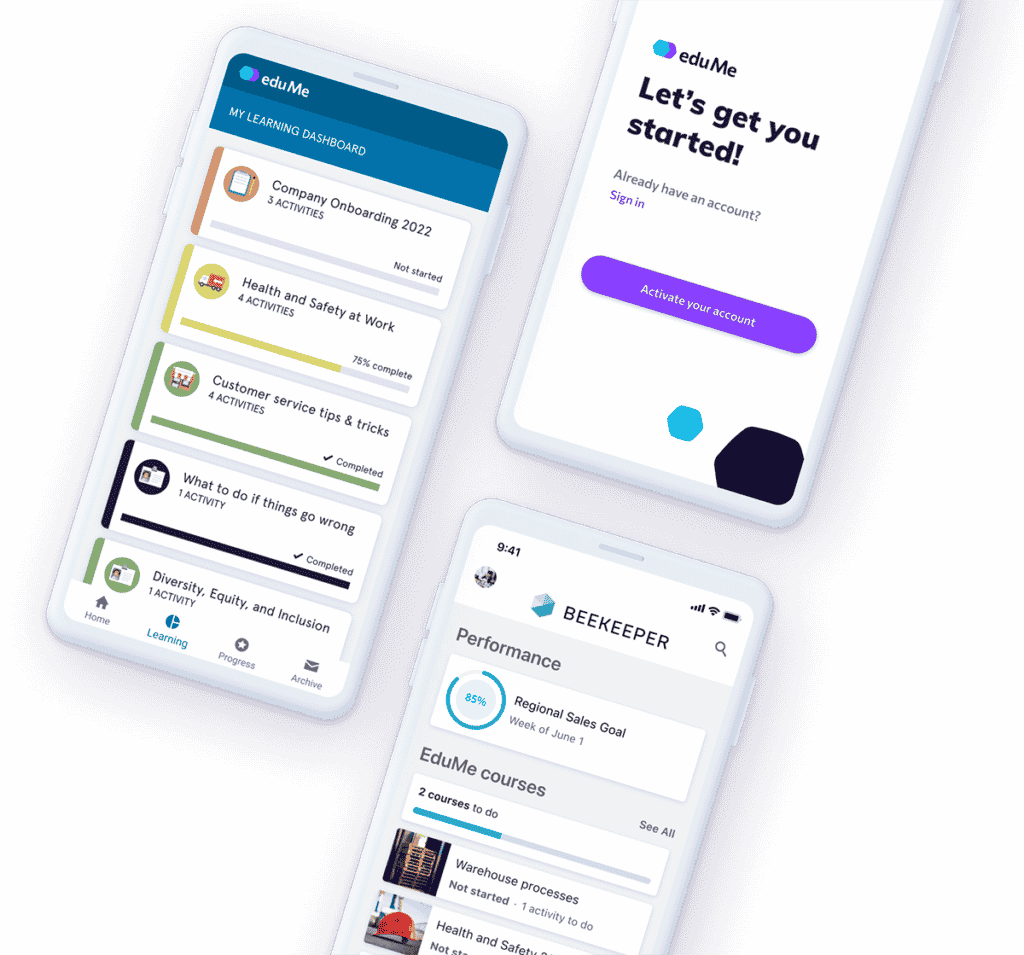The Complete Guide to Onboarding Frontline Employees | How to Craft a Winning Onboarding Experience for Hourly Workers

Employee onboarding, or the process of how an employee adapts to their workplace, is a crucial part of the employee life cycle. A successful onboarding process can go a long way toward retaining employees.
It’s no secret that frontline industries are facing a labor shortage. Organizations are struggling to hire, recruit, and retain their top talent. Many are examining every part of the employee life cycle to see what makes the greatest impact.
The first two weeks of an employee’s experience sets the tone for how that employee will engage with their workplace in the future. That’s why a positive onboarding process is strongly linked to employee retention.
The Problem with Frontline Onboarding
Employee onboarding encompasses the activities and experiences – both formal and informal – that take place during the first 90 days of employment.
That could include:
- Training programs
- Orientations
- Paperwork
- Small talk with co-workers
The problem is that many frontline organizations create an onboarding strategy that is better suited for office-based employees. These strategies don’t address the most common pain points surrounding frontline onboarding:
- Frontline teams are often distributed across different locations, making in-person training costly and inefficient
- High turnover rates and seasonal work contracts make it hard to justify extra investment in onboarding programs
- Managers are often inexperienced themselves (Harvard Business Review found that as many as 40% of frontline managers are in their first year of leadership)
Despite these challenges, the onboarding process is too essential for frontline organizations to ignore. Rather than trying to model onboarding to companies that employ office-based workers, frontline organizations are better off crafting a frontline-focused onboarding strategy.
Let’s look at a more specific example.
Frontline Onboarding Tip: Invest in Digital Training Programs and Resources

In-person onboarding can be both costly and labor-intensive, which is why many frontline organizations rush through or skip it altogether.
In fact, for many organizations, in-person training, and paper-based onboarding materials are a drain on their resources. One multinational food manufacturer was printing paper copies of their Onboarding Packets (in color!) for each new hire — an effort that cost them almost half a million dollars annually.
After digitizing their onboarding process using a frontline-focused platform like Beekeeper, that manufacturer was able to provide those materials at no cost in a mobile-friendly format.
Frontline workers want access to training in a way that is convenient for them. A Forrester Research study found that 58% of frontline workers surveyed believe that self-service access to training materials is important.
Digital training gives frontline workers self-service access so they can learn on their mobile devices and do so at their own pace in any location. Types of training could include:
- Digital workplace platforms (like Beekeeper)
- Microlearning platforms (like eduMe, which integrates with Beekeeper)
- Interactive videos and walk-throughs of key tasks
For more tips on developing a successful frontline onboarding strategy, fill out the form below to download our Onboarding Guide for Frontline Teams.

About the author
Beekeeper
Interested in learning more?
Join 1200+ companies transforming frontline work with Beekeeper. Start your journey today to make every task easier, every team stronger, and every shift smoother.







